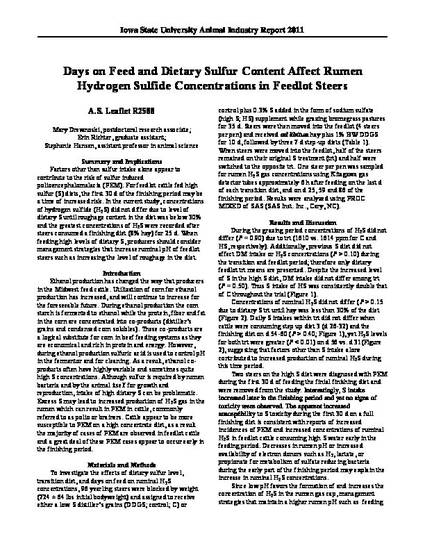
Unpublished Paper
Days on Feed and Dietary Sulfur Content Affect Rumen
Hydrogen Sulfide Concentrations in Feedlot Steers
Animal Industry Report
Extension Number
ASL R2588
Publication Date
2011
Disciplines
Topic
Beef
Summary and Implications
Factors other than sulfur intake alone appear to contribute to the risk of sulfur induced polioencephalomalacia (PEM). For feedlot cattle fed high sulfur (S) diets, the first 30 d of the finishing period may be a time of increased risk. In the current study, concentrations of hydrogen sulfide (H2S) did not differ due to level of dietary S until roughage content in the diet was below 30% and the greatest concentrations of H2S were recorded after steers consumed a finishing diet (8% hay) for 25 d. When feeding high levels of dietary S, producers should consider management strategies that increase ruminal pH of feedlot steers such as increasing the level of roughage in the diet.
Copyright Holder
Iowa State University
Copyright Date
2011
DOI
https://doi.org/10.31274/ans_air-180814-442
Language
en
Citation Information
Mary Drewnoski, Erin Richter and Stephanie L. Hansen. "Days on Feed and Dietary Sulfur Content Affect Rumen
Hydrogen Sulfide Concentrations in Feedlot Steers" (2011) Available at: http://works.bepress.com/stephanie_hansen/17/
